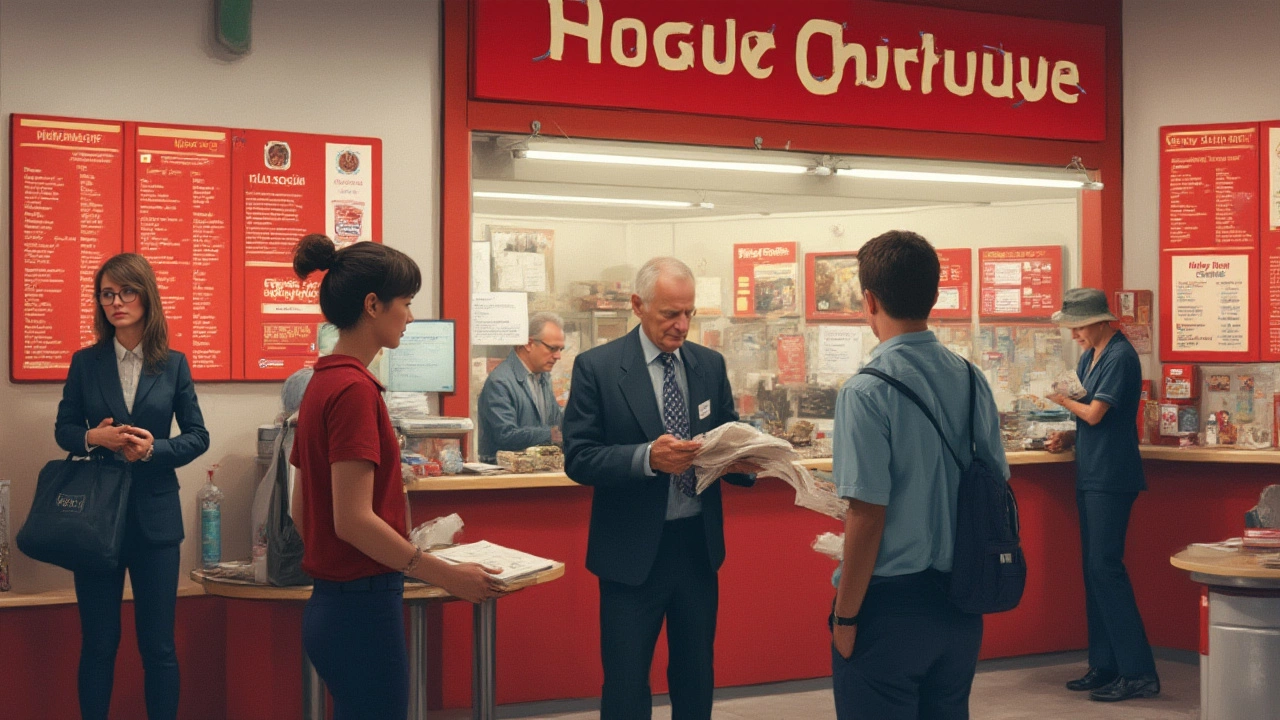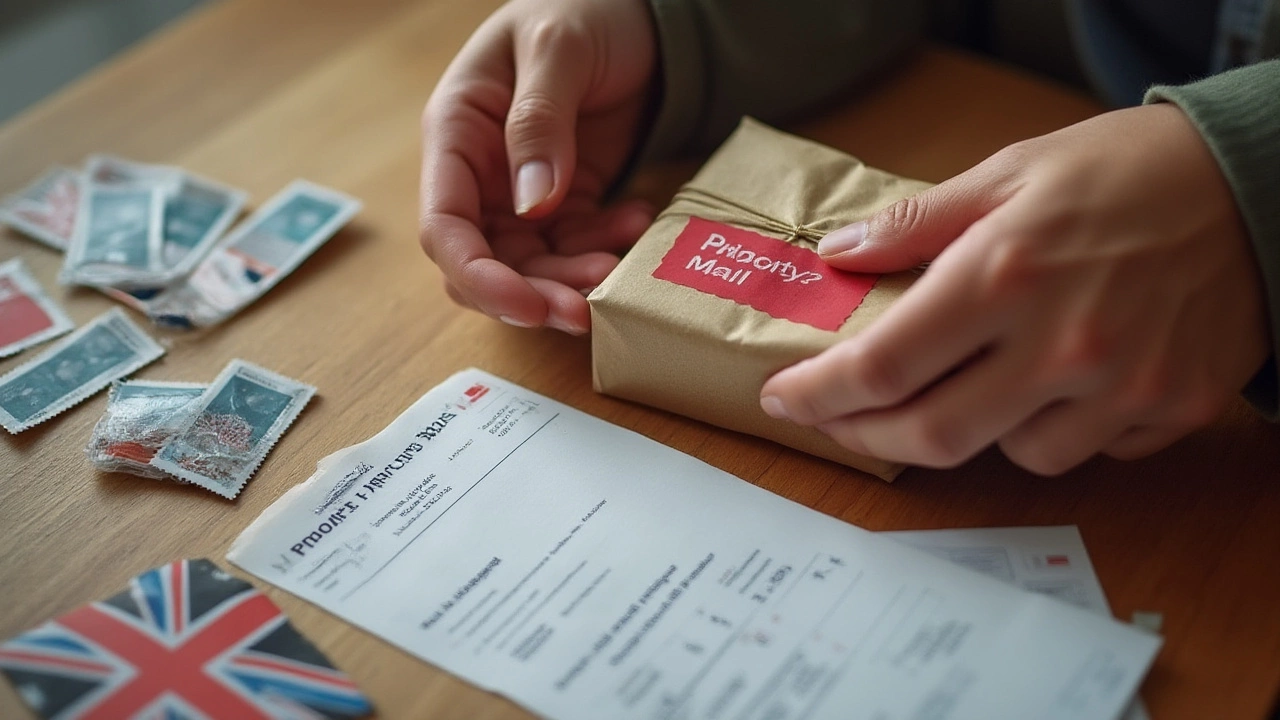2-Day Priority Mail: Cost, Delivery Time, and How to Get the Best Deal

Ever dropped a package in the mail and wondered if it'll get there on time—without draining your wallet? Everyone chases speed these days, and when it comes to delivering a birthday gift, paperwork, or an online sale, waiting a week just doesn't cut it. That's where 2-day Priority Mail steps in—with the promise of getting your stuff across the country in a couple of days. But here's the million-dollar question: How much will it actually cost you? Let's pull back the curtain on the real numbers, the tricks behind the rates, and how to keep shipping from eating your budget alive.
What is 2-Day Priority Mail and How Does It Work?
If you’ve ever tracked a package and watched it ping-pong its way across the US in record time, chances are you were looking at Priority Mail’s handiwork. The USPS Priority Mail service, often called "2-day Priority Mail," is the postal service’s reliable, speedy, and widely-used option for fast delivery within the country. Their claim: most packages zip from Point A to Point B in just 1-3 business days. But here's where it gets interesting—"2-day" is more of a target than a promise, as timing depends on where you live and where you're sending your package.
Priority Mail covers every residential address in the United States, including remote spots like Alaska and Hawaii. It includes package tracking, up to $100 insurance (pretty sweet for sending gadgets or valuable stuff), and even free shipping boxes you can get right at the post office or order online. No more scrounging around the recycling bin for an old box!
People love the flexibility—no need for special pickup appointments. You can hand over your package to your mail carrier, leave it at the post office, or even schedule a free pickup from your doorstep. Plus, shipping supplies like envelopes, boxes, and labels often cost zero if you use the branded USPS ones. That's a cost-cutter not every service offers.
But what about reliability? USPS data shows Priority Mail delivers on-time over 92% of the time. If you're shipping birthday cupcakes to grandma, that's a pretty good bet. Missed deliveries mostly happen due to bad weather or if addresses get mixed up. So double-check those addresses—it's a classic mistake even veteran shippers make.
Forget weighing and measuring every inch for some packages—flat-rate boxes, a star player in the Priority Mail lineup, let you fill a box up to 70 pounds for a fixed price. Whether you’re mailing bowling balls or t-shirts, you pay the same price, which is a lifesaver for small businesses shipping heavy items. But if you’re sending something smaller or lighter, you might score a better deal with weight-based pricing. The key is knowing what fits your shipment best before you even hit the post office.
The magic number, though, remains 2 days—especially if you’re sending coast-to-coast. Super-remote areas might add an extra day, but most places stick to the 1-3 business day promise. The service runs Monday through Saturday, and you can even spring for Sunday delivery for an extra charge in certain zip codes (think NYC and LA, not rural Montana). The fine print? Cutoff times for same-day shipping vary by post office, and big holidays like July 4th add a wrinkle to the delivery schedule.
If you want proof of delivery, you can tack on extras like signature confirmation or extra insurance. For folks running small online shops, Priority Mail can sync right up with most e-commerce shipping platforms, so you can print labels, pay postage online, and skip the line at the post office.
The bottom line: USPS Priority Mail is the chosen workhorse for millions who want quick, reliable delivery without paying luxury prices. But, like anything, what you pay depends on what you ship and where it’s going. And that's where things start to get interesting.

How Much Does 2-Day Priority Mail Cost? (With Examples and Table)
The burning question: What does it really cost to send a package with 2-day Priority Mail? There isn’t just one price—rates shift depending on your package’s size, weight, destination, and how you ship it. But that doesn’t mean it’s a mystery. The USPS posts prices, and you can even get cheaper rates by buying and printing your label online.
For folks preferring no-hassle, flat-rate boxes are a hit. As of July 2025, here’s what you’ll pay for the most common types:
| Package Type | Flat-Rate Cost (USD) | Box Dimensions | Max Weight |
|---|---|---|---|
| Priority Mail Small Flat-Rate Box | $10.85 | 8.69" x 5.44" x 1.75" | 70 lbs |
| Priority Mail Medium Flat-Rate Box | $17.10 | 11" x 8.5" x 5.5" | 70 lbs |
| Priority Mail Large Flat-Rate Box | $23.45 | 12" x 12" x 5.5" | 70 lbs |
| Priority Mail Envelope | $9.95 | 12.5" x 9.5" | 70 lbs |
Using a flat-rate box means you pay that price—no calculations, no surprise charges—if your stuff fits inside and seals shut. This is a lifesaver when shipping heavy books, electronics, or a bunch of t-shirts. If you’re shipping lighter or odd-shaped items, though, go by weight and distance (zones). Here’s how it works:
- Priority Mail by weight and zone starts at $9.25 for tiny/light packages going a short distance, and can go up to around $50 if you’re shipping a 10-pounder coast-to-coast.
- Zones are based on how far your package travels. USPS divides the US into zones—Zone 1 means your neighbor, Zone 8 is basically cross-country.
- The further it goes, the more you pay. But, for fast-moving cities like Chicago, Dallas, or Atlanta, 2-day delivery covers a huge chunk of the country for under 20 bucks if your box isn’t too heavy.
- Online discount: Buy and print your label from USPS.com or services like Pirate Ship, Shippo, or Stamps.com. You’ll save up to 15% off retail rates, and most offer handy calculators to see prices ahead of time.
Here’s a look at estimated prices for weight-based Priority Mail (as of July 2025):
| Package Weight | Zone 1-2 Price | Zone 5 Price | Zone 8 Price |
|---|---|---|---|
| 1 lb | $9.25 | $10.45 | $12.10 |
| 5 lbs | $15.80 | $17.35 | $20.15 |
| 10 lbs | $22.30 | $25.60 | $34.25 |
Say you’re sending a college care package from Philly to Denver (around Zone 5), loaded with snacks, books, and socks, weighing 5 pounds. With traditional Priority Mail, you’re in the ballpark of $17.35. If it all fits in a Medium Flat-Rate Box, you’ll pay $17.10—even if that box is a bit over 5 pounds. Pretty close, so sometimes it's worth letting size decide which box you use. Want to keep it cheap? Remember, Small Flat-Rate Boxes and Envelopes are deal-makers for light, valuable items like documents or jewelry.
It’s easy to see how one strategy doesn’t work for everyone. For heavier, compact items? Go with the flat-rate. Sending lightweight or awkward stuff? Price by weight/zone, and use USPS’s calculator for pinpoint accuracy. You don’t want to guess wrong and end up paying more than you need to.
Don’t forget about insurance. Every Priority Mail shipment comes with $100 built in, but if you’re sending something big—a fancy handbag, electronics, or vintage collectibles—if it’s worth more, you can add extra coverage for a few bucks. But for most mailers, that $100 coverage already gives peace of mind compared to regular mail or cheap parcel services with zero insurance.
Business owners: If you ship a lot, consider negotiating "Commercial Plus" pricing or using e-postage services. Savings add up fast, especially if you’re mailing hundreds of packages a month. Some platforms tie directly into your online shop, auto-filling addresses and making bulk shipping a breeze. You’ll not only save money but time—and in shipping, both matter.
Quick tip: Always double-check holiday schedules and regional service alerts (think wild weather in hurricane or blizzard season). Even Priority Mail can get slowed down in a rare snowstorm, and knowing the schedule can save you from apologizing later when "Happy Birthday" turns into "belated."

Tips for Saving on Priority Mail and Picking the Right Shipping Option
So you want the package there fast, but you’d also rather not burn a hole in your wallet? Let’s talk about how to really save on 2-day priority mail, and avoid paying more for shipping than for what’s inside the box. The trick is knowing your options and thinking a step ahead. Here are my proven, no-nonsense tips:
- Flat-rate is your friend—for heavy, small stuff. Got cookbooks, tools, or tech? Shove it all in a Flat-Rate Box. Don’t let air fill the box—make every inch count. If you’re only sending a sweater and a postcard, check if weight-based pricing is cheaper. Don’t assume—run the numbers or use USPS’ price calculator online.
- Online label discounts. Never pay the in-person post office retail rate unless you have to. USPS, Pirate Ship, and other shipping platforms often undercut those prices. Printing from home means you hand it to your mail carrier and skip the endless queue (who still waits in line anyway?).
- Grab free boxes and supplies. Order Priority Mail packaging free from USPS.com. You won’t find a better deal on sturdy shipping material—and nobody will hassle you about mismatched boxes.
- Beware the cutoff time. Not every post office ships out at the same hour. Missing a deadline might cost you a day, which can throw off delivery. Always know your local acceptance time, especially during holidays.
- Check delivery estimates. Plugging in your ZIP codes at the USPS site gives exact delivery timelines. Some destinations get 1-day service, others take 3. Priority isn’t magic, and the precise ETA can save you drama if you communicate with the recipient.
- Watch the holidays. Don’t count on packages arriving on July 4th, Christmas, or New Year’s. Mailing early for back-to-school, end-of-year gifts, or tax documents pays off every time.
- Track every shipment. Every Priority Mail label comes with free tracking. Share the number with the receiver so they know when to watch for the mail carrier—or bad weather won’t leave Aunt Karen’s birthday present on the porch for two days in the rain.
- Use Regional Rate Boxes for short hops. These are a hidden hack for packages staying within a couple hundred miles. They work like flat-rate but often come out cheaper locally. The only catch? They’re being phased out in some areas as shipping models change, so check availability.
- Don’t eyeball your scale. USPS rounds up to the next pound, so a 2.1 lb box is a 3 lb box in their eyes. Every ounce counts—using a kitchen or postal scale can save you surprise overcharges.
- Adjust the insurance as needed. Sending vintage records? High-priced electronics? Bump up your insurance, but don’t pay for coverage you don’t need on books or clothes. It’s easy to add when you print your label.
Sometimes, other shipping methods might fit you better. UPS 2nd Day Air or FedEx 2Day compete with Priority Mail’s 2-day speed, but their rates can spike if you don’t have a business account, and they rarely offer free boxes. If your box is teeny or needs weekend delivery, USPS is almost always the king for low cost and convenience. UPS and FedEx, on the other hand, excel if you’re shipping big, oversized items or want guaranteed next-morning delivery—at a premium.
If you're sending tons of packages each month—think eBay or Etsy seller status—look into volume discounts, loyalty programs, or platforms like ShipStation or PayPal shipping. These can save you serious money or toss in free pickups, too. For rare or one-off shipments, sticking to USPS Priority Mail usually means the lowest hassle and best value.
Did you know over 1.3 billion packages went Priority Mail last year? It’s not just about volume—the service keeps tweaking based on customer feedback and data. Continuous upgrades in tracking, faster delivery lanes, and smart distribution centers mean your odds of on-time, safe delivery keep getting better. Still, always be honest about what you’re shipping. Automated sorting machines don’t forgive—and any undeclared lithium batteries or liquids can bounce a box back to you, or worse, flag you for review.
Quick recap for speed readers: Check your package’s weight and size, pick the right box, print your label online, and ship with confidence. Double-check the destination’s delivery window. Tell the recipient to keep an eye out for the tracking update. And, if you’re ever stuck in the post office line, you can brag you actually know how 2-day Priority Mail really works.